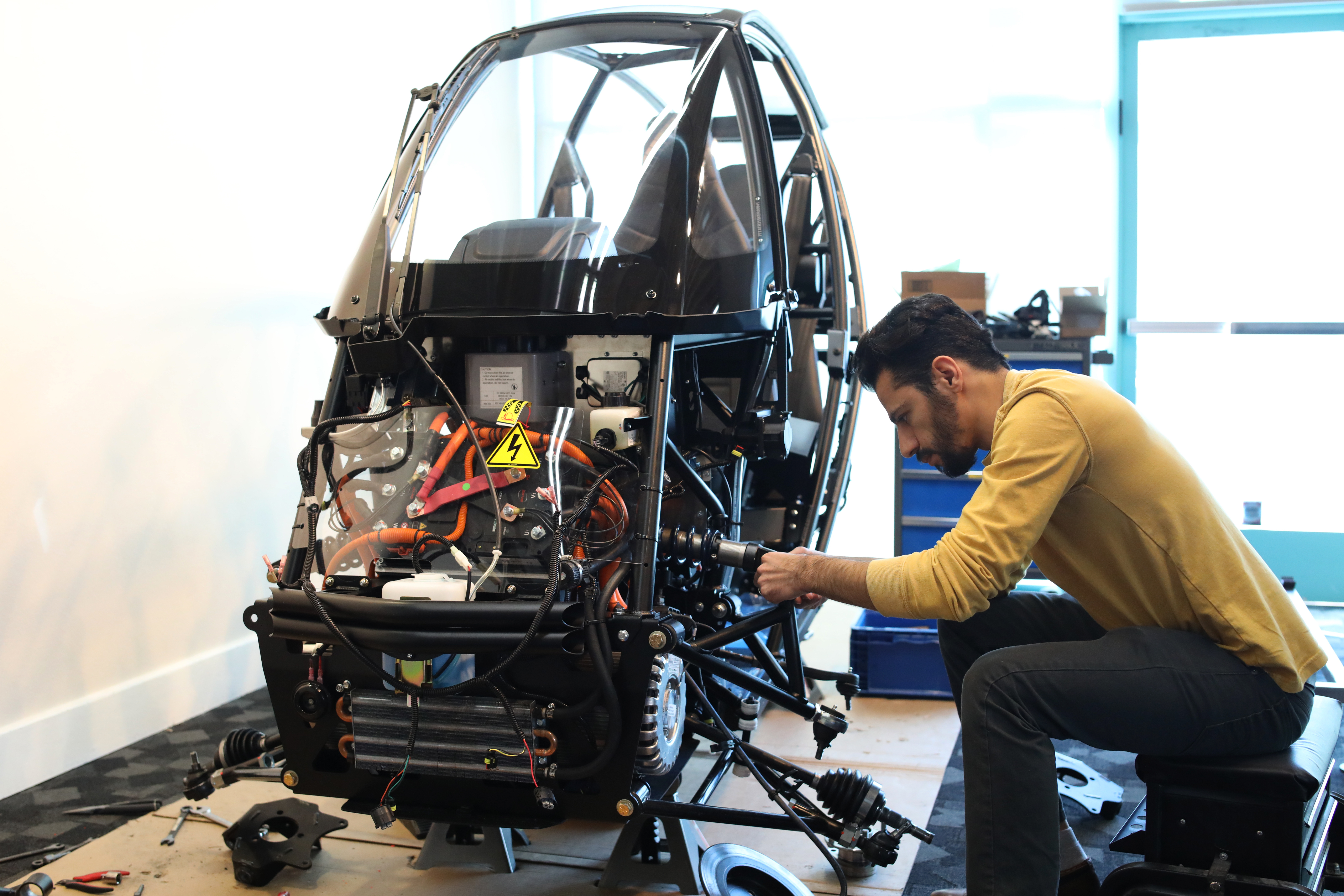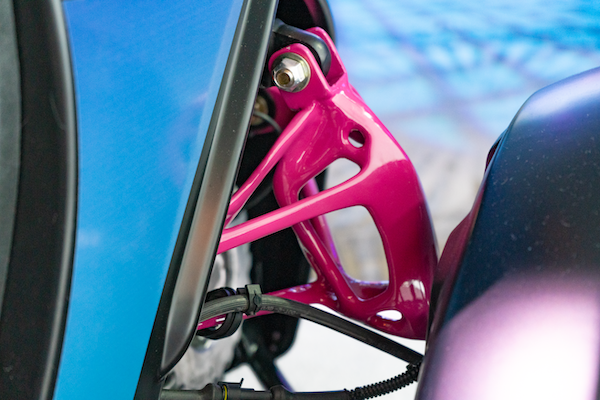Arcimoto FUV Goes on a Lightweighting Ride
Using generative design tools and AM, XponentialWorks helps Arcimoto reduce part sizes to squeeze more performance out of the electric vehicle.

With help from XponentialWorks, Arcimoto embarked on a lightweighting journey using generative design tools and AM. Image Courtesy of Arcimoto
Latest News
February 19, 2020
A chance encounter between tech veteran Avi Reichental and Mark Frohnmayer, CEO of an electric vehicle company, was the genesis for a lightweighting journey that aims to boost the overall ride quality of a fledging electric vehicle.
Founded in 2007, Arcimoto’s latest incarnation is the Fun Utility Vehicle (FUV), a pure electric three-wheeled vehicle that with its 173.7 MPGe range is designed as efficient transportation for everyday commuters and fleets. After their impromptu meet up, Reichental presented Frohnmayer with an intriguing proposition: The opportunity to improve performance of the FUV via a lightweighting initiative that would tap into cutting-edge technologies like generative design software and additive manufacturing to help reduce part sizes and allow the vehicle to use electricity more efficiently to go further on a single charge.
Reichental, founder of XponentialWorks, a venture, innovation, and advisory company specializing in additive manufacturing technologies, jumped on the chance to use FUV to demonstrate how 3D printing technology could change the way companies design and manufacture products. “In this new age of industry 4.0 manufacturing, no one company can do it all alone,” he says. “This project demonstrates the power of curating relationships and building joint innovation programs that pool together resources and expertise from complementary organizations to create practical tractable products in record time.”
Once Arcimoto took Reichental up on his offer, the team got to work. XponentialWorks brought in one of its portfolio companies—ParaMatters, which makes AI-enabled generative design software. With CogniCAD, engineers enter specific design goals and materials parameters, and the software explores an infinite number of permutations based on the inputs to come with an optimal design for lightweighted parts. The software will also automatically combine multiple parts into a single homogeneous assembly, which further helps in weight reduction.
“With AI-based generative design, XponentialWorks was able to create parts that were lighter, using less material and just as strong as traditionally manufactured parts,” Reichental says. “The goal was to save an average of 40% of the weight per component, which we exceeded.” In fact, in four weeks, the team was able to lightweight key parts significantly: The rear swing arm by 34%; the knuckle, by up to 36%; the upper control arm, by up to 52%; and the brake pedal by up to 49%, Reichental says.

While ParaMatters CogniCAD achieved strong results in terms of high-quality geometries and improved mechanical properties, the designs were also readily 3D printable—another bonus of the software. The smaller parts of the vehicle, including the brake pedal and the knuckle, were produced using Laser Powder Bed Fusion processes, where steel powder is directly fused with a laser. The larger parts such as the upper A-arms and rear swing arm were produced with investment cast aluminum using a sacrificial pattern prepared with Material Extrusion technology.
As part of their on-going relationship, Arcimoto and XponentialWorks have settled on a goal to make the FUV 200 pounds lighter from selectively targeted parts than it was at the onset of their partnership. The partners are looking to develop a supply chain that can support the targeted cost and quality requirements for full-scale fabrication, Reichental says. At this time, the team is leaning towards metal binderjet technologies and hybrid sand casting processes as the most cost effective and reliable means of production at this volume.
“We are evaluating additional parts on the FUV for lightweighting and will prioritize applications that can be brought to market quickly,” Reichental says. “Each application must exceed the value proposition of the replaced technology.”
Watch this video to hear more about the lightweighting effort for the Arcimoto FUV.
Subscribe to our FREE magazine, FREE email newsletters or both!
Latest News
About the Author
Beth Stackpole is a contributing editor to Digital Engineering. Send e-mail about this article to DE-Editors@digitaleng.news.
Follow DE





